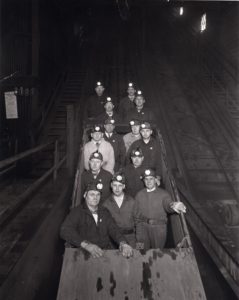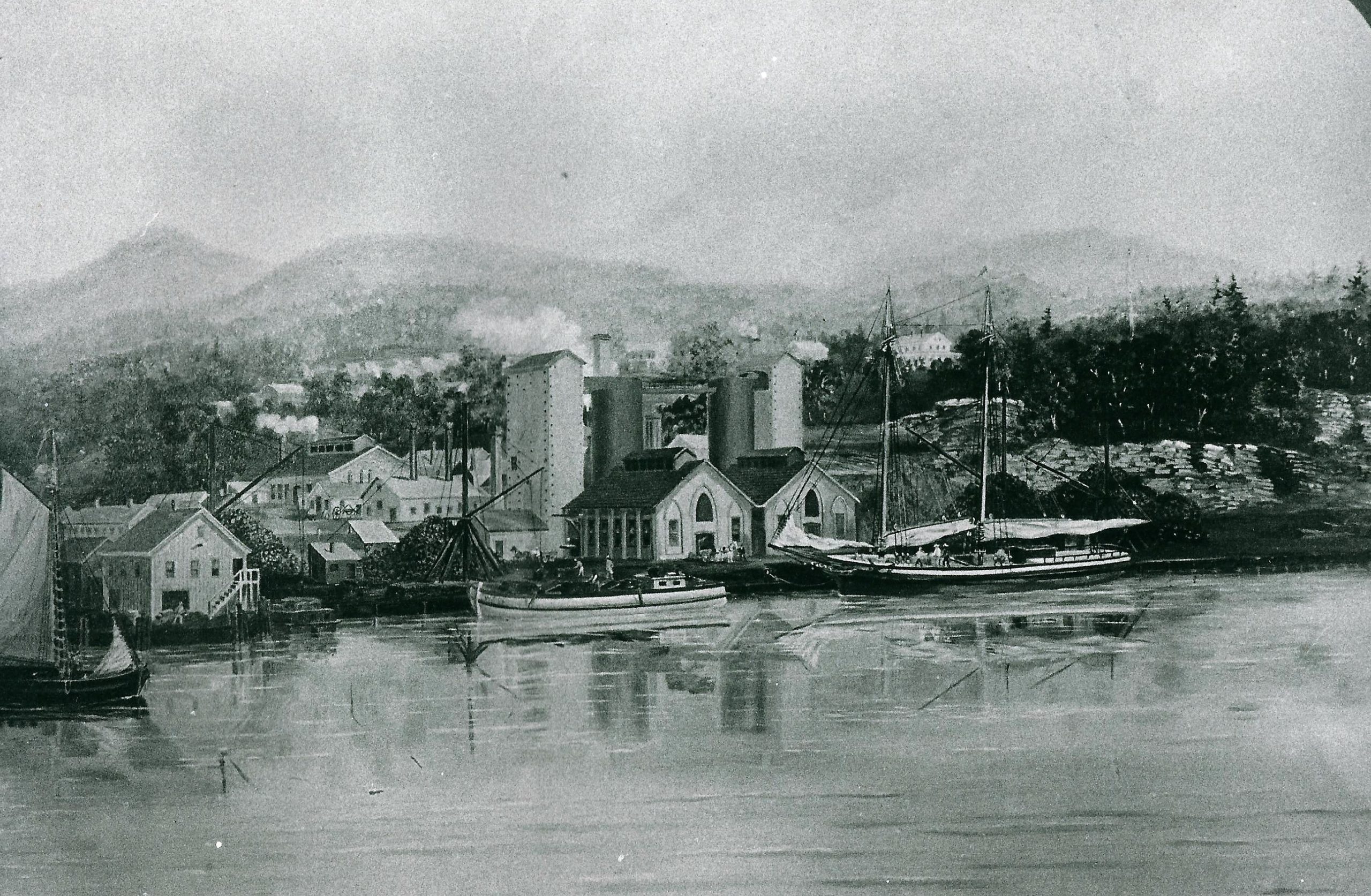Andebit et beaqui corendit, ut quostes esciendion re dit ad et prae parion es quia quas alibus sam, omnim faciden ducipidiat arum autem nobis enis es voat

The Story of Iron in Crown Point & Moriah
The heyday of the booming iron industry may be long gone, but its legacy remains.
At first glance, the landscape of the Champlain Valley may seem peaceful, bucolic—and in some spots, even forsaken. Yet just some 150 years ago, this area was home to a booming iron industry that employed thousands of people at its peak, mining nearly ten thousand tons of iron ore per month—most of which traveled south to Albany and Troy to be transformed into iron—and later steel—for horseshoes, nails, wagon axles, and America’s railroads.
Crown Point and Moriah are two particularly significant towns that helped fuel the industrial revolution—and the growth of a young nation as a whole.
Today, the influential story of iron is largely forgotten and most evidence of the massive mines, factories, and furnaces erased. Bustling company towns have become ghost towns isolated from the communities with which they once shared vital connections. The skyline of smoke and fire is long extinguished. The echoes of drills and train cars have been muted from the landscape as the forests have reclaimed their place.
Listen to the Intro of the Iron Story

At first glance, the landscape of the Champlain Valley may seem peaceful, bucolic—and in some spots, even forsaken. Yet just some 150 years ago, this area was home to a booming iron industry that employed thousands of people at its peak, mining nearly ten thousand tons of iron ore per month—most of which traveled south to Albany and Troy to be transformed into iron—and later steel—for horseshoes, nails, wagon axles, and America’s railroads.
Crown Point and Moriah are two particularly significant towns that helped fuel the industrial revolution—and the growth of a young nation as a whole.
Today, the influential story of iron is largely forgotten and most evidence of the massive mines, factories, and furnaces erased. Bustling company towns have become ghost towns isolated from the communities with which they once shared vital connections. The skyline of smoke and fire is long extinguished. The echoes of drills and train cars have been muted from the landscape as the forests have reclaimed their place.

Many workers, who once hauled the ore from deep underground up into daylight or stoked the fires in the furnaces that made the skyline glow red for nearly a century, moved on. Others, who considered it home, stayed.
The stories of iron and the people who worked it remain in this landscape—sometimes it just takes a little imagination to uncover them. As you follow this audio journey, the sights and sounds of iron’s heyday will awaken. You’ll discover what was once here: a booming iron industry filled with sounds of blast furnaces, steam-powered forges, freight trains, canal boats, crews of immigrant iron workers, and free-wheeling industrialists.
As you journey on this audio tour and read the accompanying web content, you’ll begin to see features that were not set in place by nature: rocks that have been stacked, depressions in the ground, stone walls in the woods. These nearly hidden features have big stories to tell: a pile of stacked rocks in the woods was the foundation for an industrial building; a slight depression indicates where a house stood; the stone walls once fenced-in farmland and pastures without a tree in sight. An isolated cluster of houses may be all that remains of a large settlement. Road signs with names like “Furnace Road” or “Switchback Road” speak to the community’s industrial heritage.
This is no glamorized or romantic history story. This is a real story of communities that developed, prospered, were abandoned, and are now reinventing themselves again. You’ll discover authentic—and sometimes gritty—places. After all, these towns are rustbelt towns; they were company towns with company workers. When the last iron company pulled out in 1971, generations of workers were left behind with few job opportunities to replace iron. And yet, small-town pride and hope remain.
The iron industry in the 19th and 20th centuries in the Adirondacks and in Troy was extensive. This iron tour focuses on Moriah and Crown Point from approximately 1823-1940. Yet the events that took place here do not exist in isolation—they all are interconnected, reaching into numerous Adirondack communities and industries around Troy and Albany, where the iron was transformed into railroad rails and other products. We encourage you to expand your understanding of this era beyond the tour. Listen to our companion audio tour, The Iron Industries of Troy and Albany. The full story of 19th century American industrialization is truly local, regional, national, and global.
The Lake Champlain and Adirondack Region is home to several other important mining sites, including Lyon Mountain. You can learn more about the iron mining history of Lyon Mountain at https://www.goadirondack.com/entries/lyon-mountain-mining-and-railroad-museum
Travel Tools
This driving tour can be completed leisurely in under 4 hours. This will allow you time to stop and explore each site. If you’re coming from far away, we recommend staying at the Edgemont Bed & Breakfast in Port Henry–once the home of a local iron magnate’s mistress!
- Starting Point: Crown Point State Historic Site
- Ending Point: Monitor Bay Park, Crown Point
- Total Stops: 28, with optional detours
- Total driving distance: about 40 miles
Total Audio Time: 2 hours and 53 minutes



